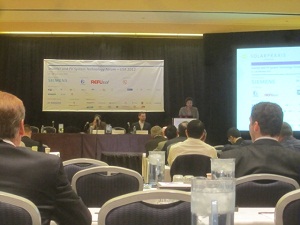Solar in China’s 5-year plan, but not at the top
 While China’s new five-year investment plan for emerging technologies shows a 159 percent increase over the previous plan, solar isn’t the country’s top priority, according to a new report from Lux Research.
While China’s new five-year investment plan for emerging technologies shows a 159 percent increase over the previous plan, solar isn’t the country’s top priority, according to a new report from Lux Research.
Lux used public documents along with insider opinion and some privately held draft documents to put together a report on China’s new five-year plan for emerging technologies.
“There’s a really big focus on the biotech area,” said Lux vice president of research Chris Hartshorn. “Also, there is some focus on areas of advanced agriculture.”
Research and development and infrastructure funding are highest for environmental technologies dealing with things like water treatment, so the country can grow its industrial business without contaminating drinking water and degrading the quality of life, Hartshorn said.
China has allocated $270 billion to environmental technologies, with the lion’s share—$145 billion—going toward water.
“That’s a huge number,” Hartshorn said. “It’s monstrous.”
By contrast, China plans to invest $180 billion in new energy. Most of that—$70 billion—is slated to go toward new nuclear power plants. Another $62 billion will go to wind power investments and just $36 billion to solar.
“There’s been all this hype about solar in China,” Hartshorn said. “We’ve seen all these headlines, but solar is getting half the investment nuclear is getting.”
Those are infrastructure and subsidy investments, Hartshorn said. On the research and development side, solar fares better. The country is allocating $160 million, the largest amount of any new energy R&D funding, to solar technologies. That’s twice what wind research will receive over the next five years.
Hartshorn said that R&D funding is typically reserved for next generation research being done at the earliest stages.
“There are a lot of powerful solar companies in China,” Hartshorn said. “The government expects those companies to do their own research.”
He said he expects the government-funded R&D to center around advancing thin-film solar technology to be more efficient and cost-effective.
Overall, Hartshorn said, the Chinese five-year plan looks like it prioritizes food security and creating a space where the country can grow into an industrial super power without sacrificing energy security and a relatively safe environment.
Photo: Max D, Flickr CC



